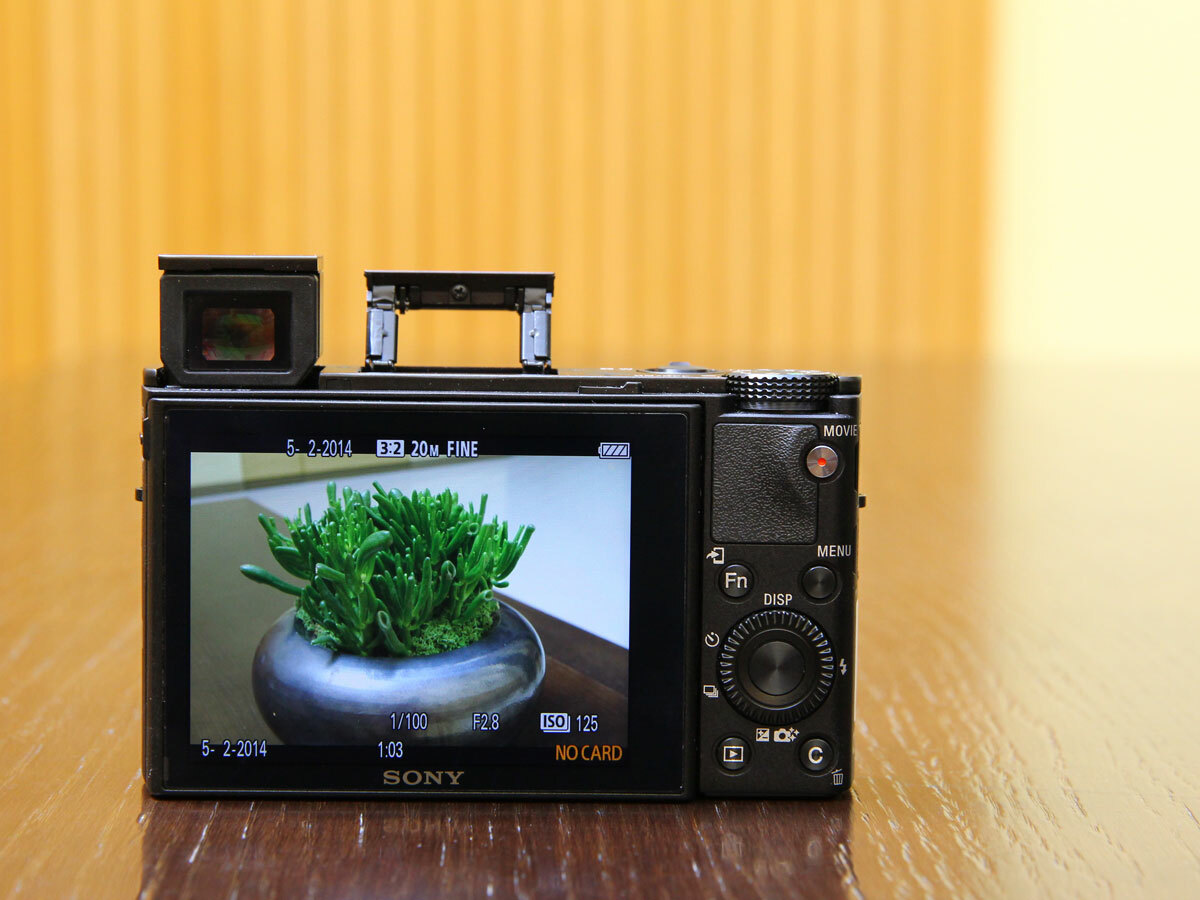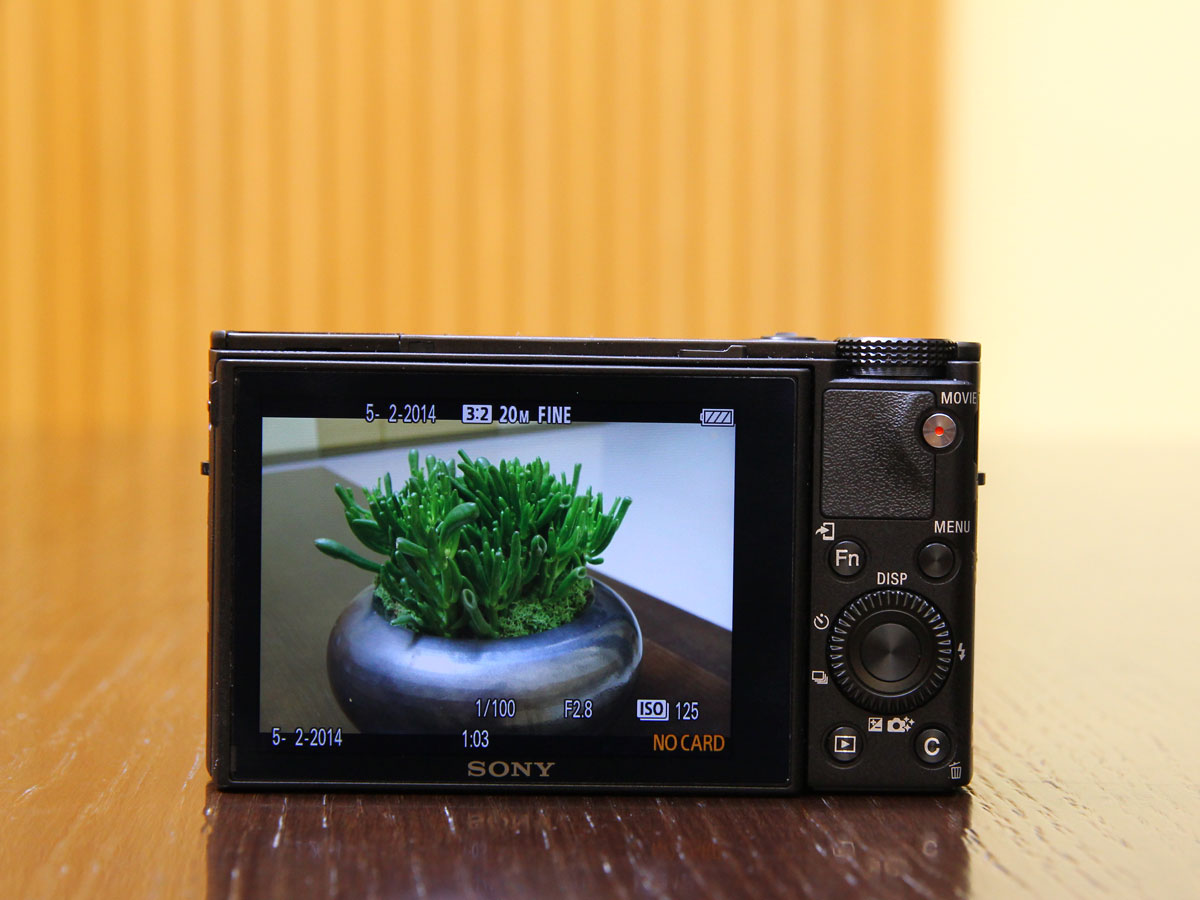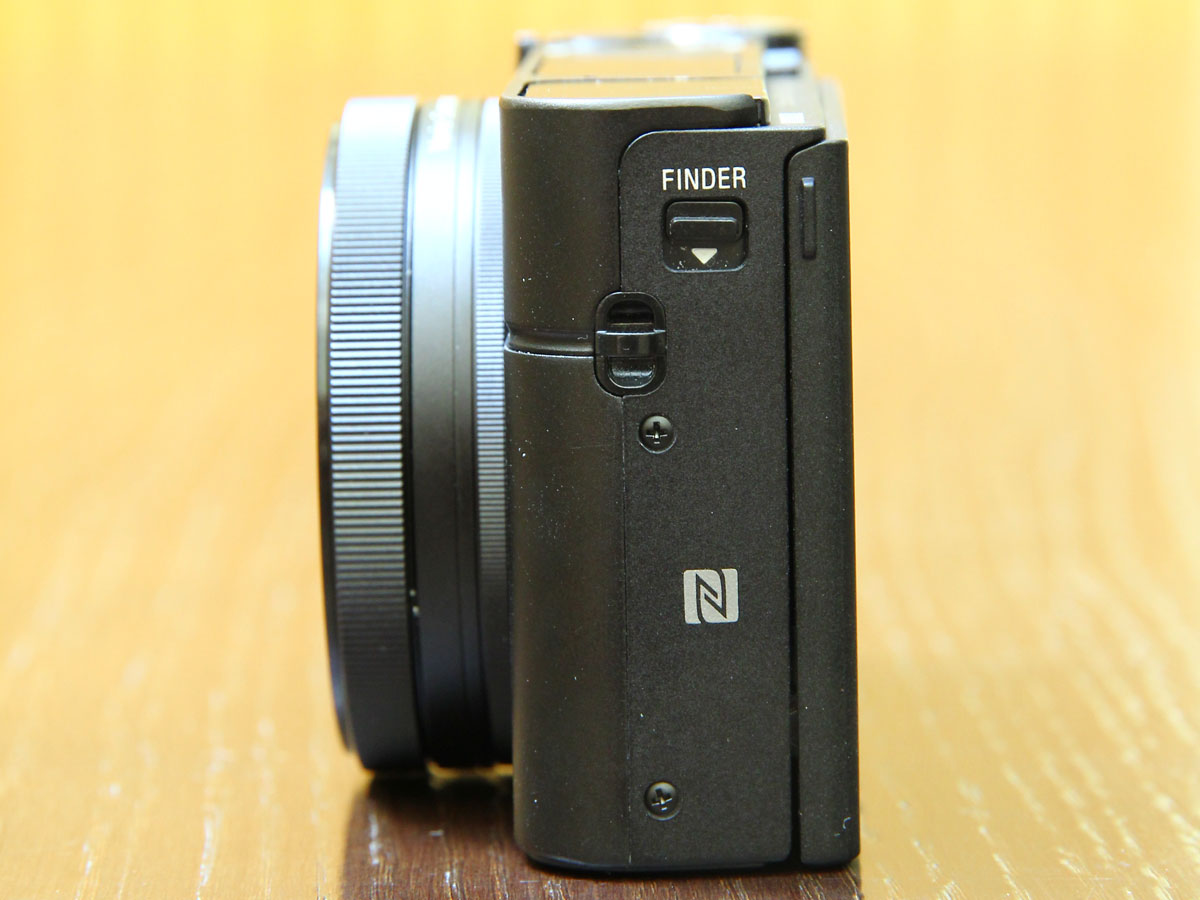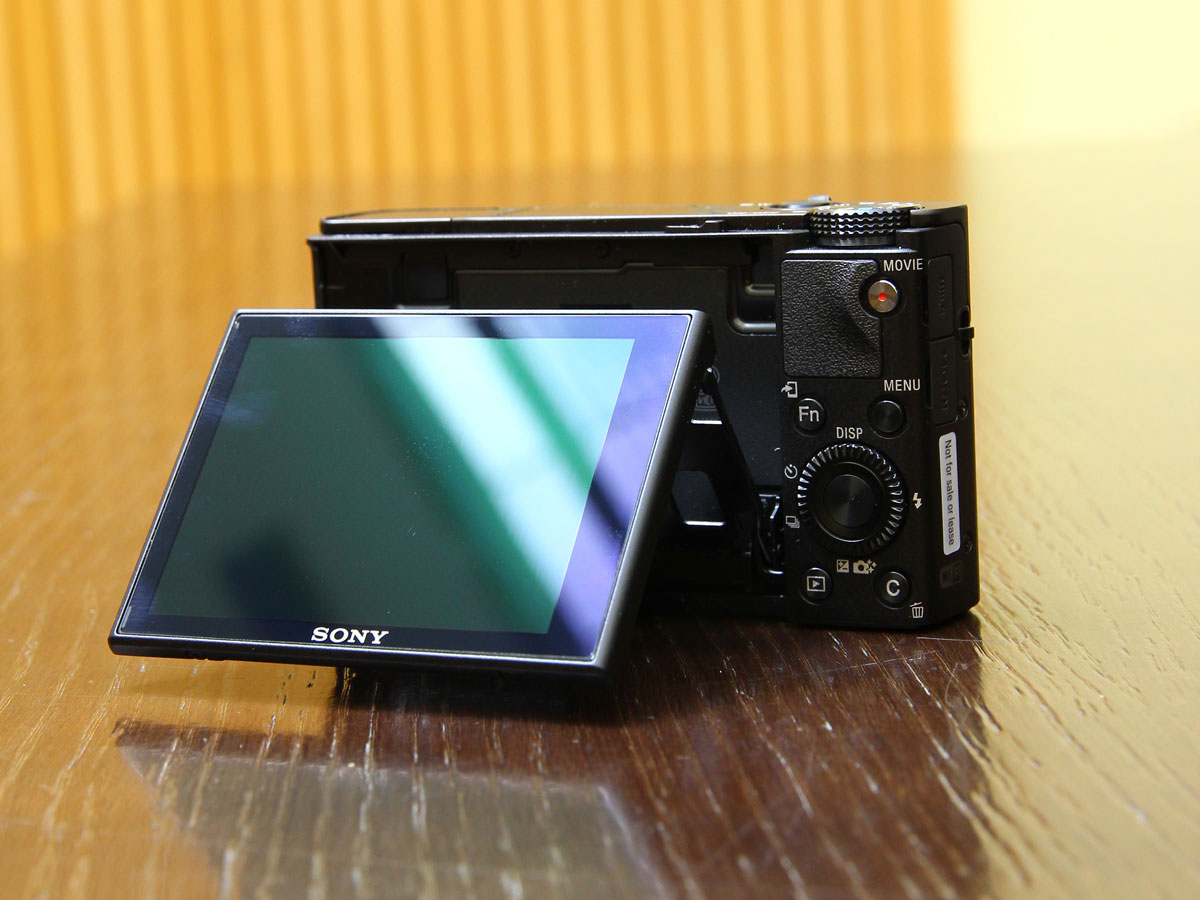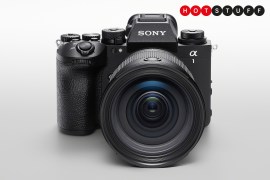Hands on with the Sony Cyber-shot RX100 III
Sony's new premium compact has an electronic viewfinder and wide-angle lens to go with its big sensor - and we've had a play with it
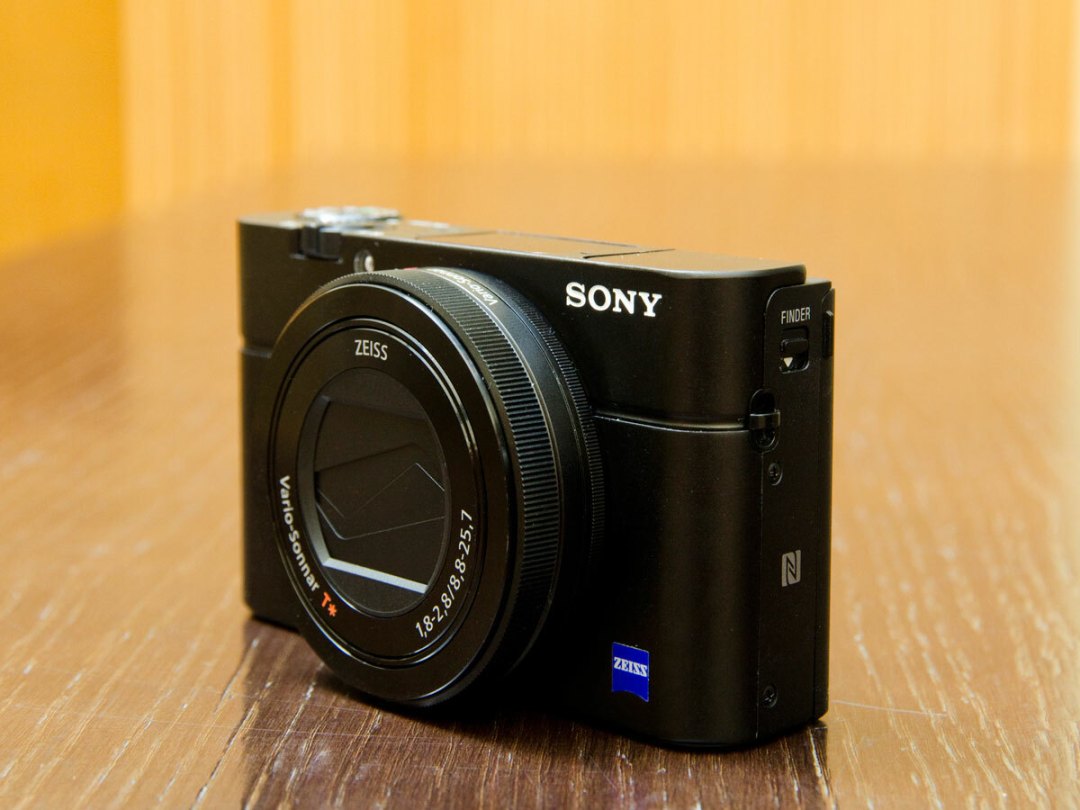
The world of the super-compacts is getting pretty crowded of late, but one camera stands out: the Sony RX100. Or rather, three cameras stand out – because Sony’s just added an RX100 III to the original and mark II, and it looks rather special indeed.
Like its photographic siblings it has a big 1in sensor, compact body and bags of special skills. But new to the mark III are an electronic viewfinder, wide-angle lens and dozens of other enhancements that mark it out as Sony’s new top dog in this particular kennel.
We’ve spent a bit of time with it, so here are our initial thoughts.
READ MORE: Hands on with Sony’s super-fast Alpha 77 II DSLR-style snapper
IT’S GOT A VIEWFINDER
The two previous RX100s are both great – the first model has long sat high in our list of the best compact cameras, and the Mk II added a back-illuminated sensor and hotshoe to an already stellar package. But neither has a viewfinder, with both instead requiring you to do all of your framing via the back LCD screen.
Well no more. The RX100 III has an electronic viewfinder, though quite how Sony managed to fit it in is beyond us. Possibly there’s some space-time jiggery-pokery at play, because the III is a mere 2.7mm thicker than the II, and 9g heavier. What’s more, the EVF nestles away neatly inside the camera body when not in use, popping up with a satisfyingly graceful motion when you push a little button on the side. You do then have to pull the eyepiece out from the viewfinder before you can use it (and push it back again before you’re able to stow it away), but we’d always rather have a viewfinder than not, so this seems a compromise worth making.
In use, it’s best described as reasonable. Don’t come to the RX100 III expecting a nice big EVF such as you’d get on a compact system camera like the OMD-EM1 – because you’ll be disappointed. But while on the small side, it certainly feels bigger than the optical effort on the Canon PowerShot G16, and helpfully displays shooting information too. It also has a decent 1440k-dot resolution and, as you’d expect from an OLED display, it’s both bright and colourful.
In conclusion – good decision, Sony.
Of course you don’t have to use the EVF – the 3in LCD display remains, and it now has even greater gymnastic abilities, flipping out to 180 degrees. Supposedly that’s for selfie-taking purposes, although personally we’re hoping the selfie craze dies a sudden death very soon, so let’s just say it makes it easier to take photos from awkward angles.
READ MORE: Canon PowerShot G16 review
TAKING THE WIDER VIEW
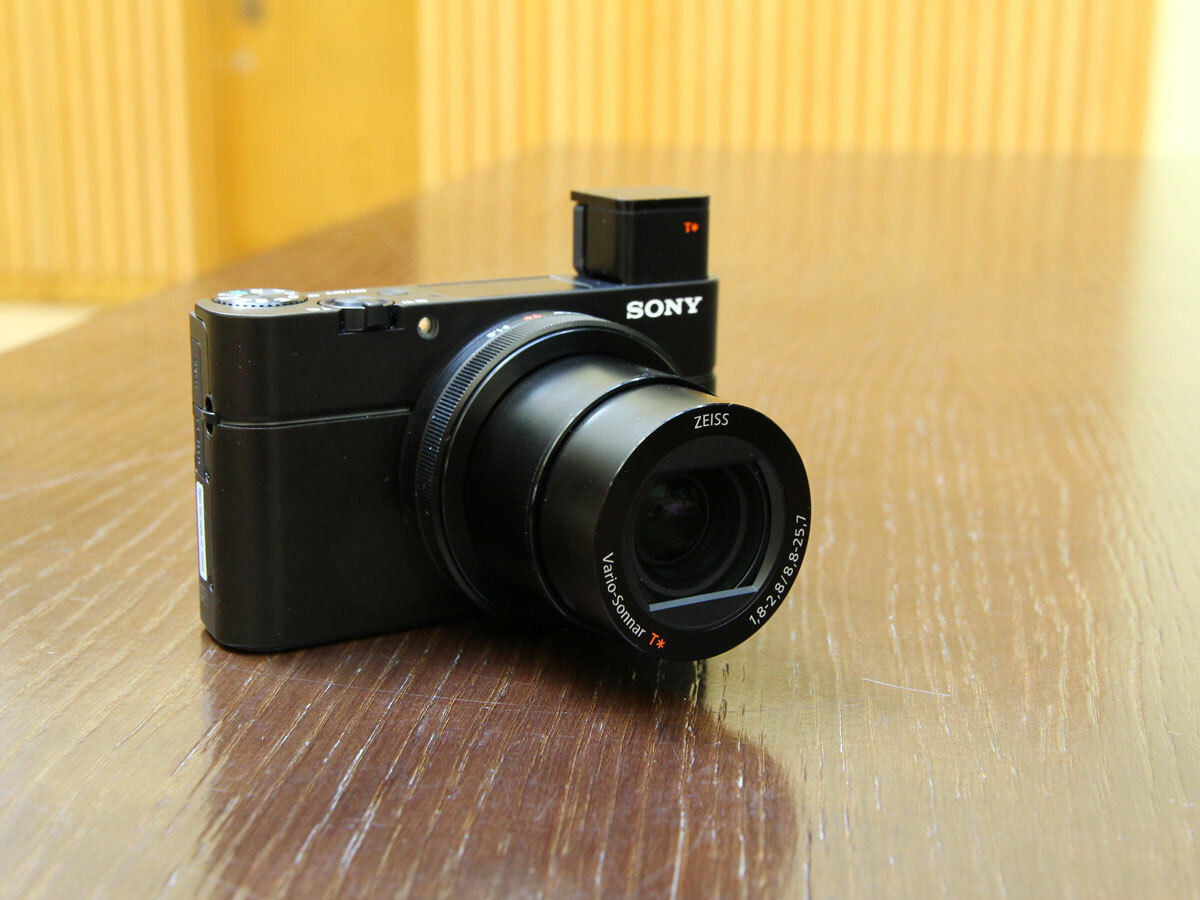
The other main physical difference between the RX100 III and its predecessors is in the lens.
Where the I and II both have a 28-100mm (35mm equivalent) Carl Zeiss Vario-Sonnar T* lens, the III’s goes from 24-70mm. It’s a range much beloved of photographers – all of the big full frame camera systems have 24-70mm lenses – and goes from fairly wide to decent portrait territory. The difference between 24mm and 28mm may not sound like much, but every mm makes a huge difference at the wide end, and the RX100 III takes in a lot more of a scene than its forebears.
And that’s not all: where the lens on the I and II went from f1.8 at the wide end to f4.9 at the long end, the III goes from f1.8-f2.8. That’s a stop-and-a-half of extra light coming in when you’re zoomed to the full extent, which could mean the difference between getting a sharp shot or a blurry mess.
There’s more good news on the low-light front inside the RX100 III. For starters, it’s equipped with Sony’s latest Bionz X processor, as seen on (or rather tucked away inside) the latest Alpha cameras and class-leading HX60V super-compact. That gives it impressive high ISO results: it goes up to ISO 25600, and should produce clean images a fair way into the range. Unfortunately, we were told that the model we were using wasn’t a final production version, so we weren’t able to keep our test shots, but from what we saw it will be a top performer in murky conditions.
Certainly, our setting for the launch – an ancient Masonic temple in the heart of London’s financial district – is best described as ‘museum-like’ in its lighting. But even so, the pictures we took of the temple’s ornate decorations came out nicely sharp and noise-free even at reasonably high ISOs. In-built 5-axis stabilisation is a further help in this regard – and indeed in all shooting situations.
The sensor remains unchanged from the Mk II: it’s a 1in 24.1MP Exmor R CMOS affair, which we already know can produce outstanding results. It’s bigger than the 1/2.3in sensors found in many of its rivals, and in our review of the RX100, we certainly felt that it made a difference.
READ MORE: Meet the best compact camera in the world – the Sony Cyber-shot HX60V
VIDEO STAR
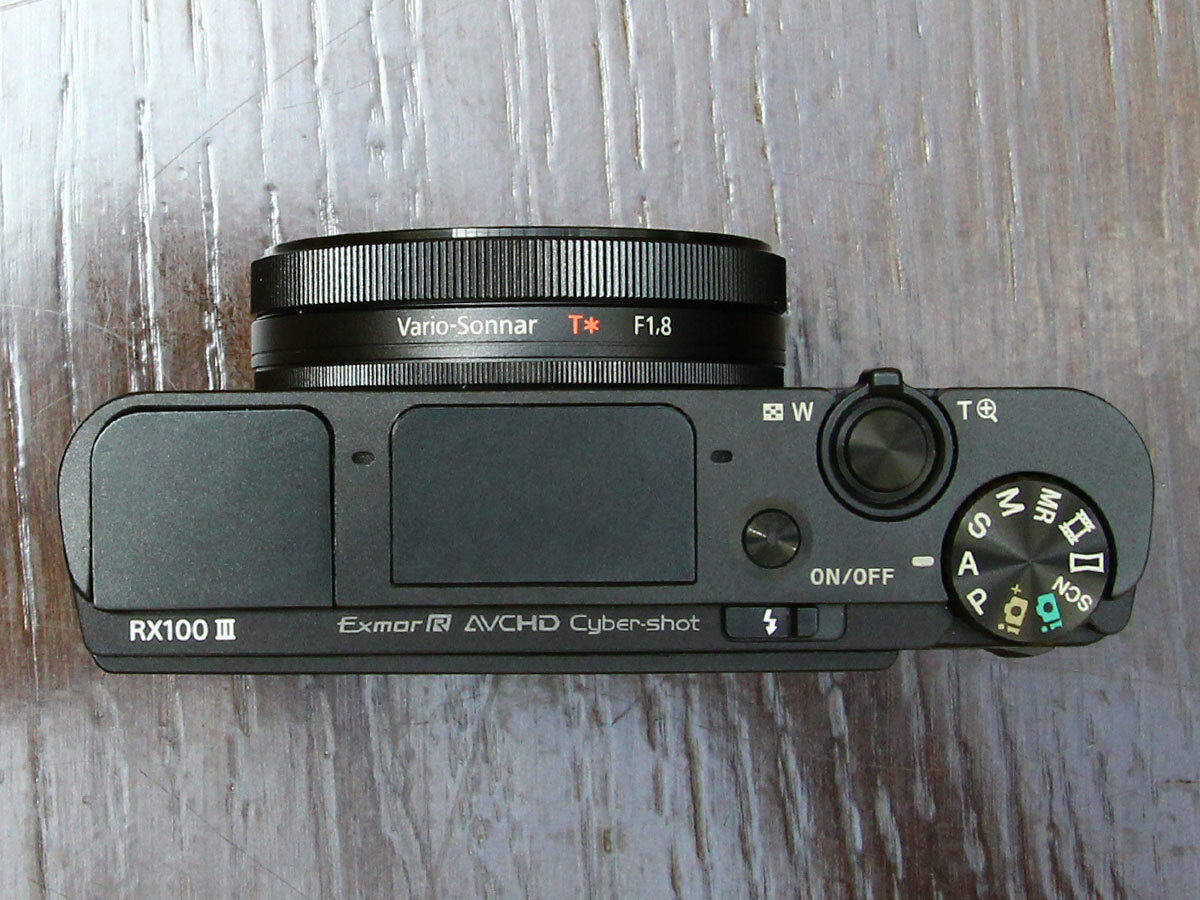
The RX100’s video skills have also been ramped up for the Mk III. It can now shoot in the advanced XAVC S format, which is based on the professional-grade XAVC standard, and can record full HD footage at high bit-rates of up to 50Mbps. There’s also a 120p mode for super slow-mo shots, and of course the 5-axis stabilisation will also be a boon when filming.
Subject tracking has also been enhanced – both for videos and stills – with the likes of Lock-on AF and Eye AF helping you keep your subject in focus. And another nice touch is the option to simultaneously record a small MP4 clip and full HD version, making it quicker and easier to share videos with friends.
Speaking of sharing: the RX100 III has built-in Wi-Fi and NFC, but we weren’t able to put them to the test in our time with the camera. We’re yet to see a camera that properly nails the whole connectivity thing, but maybe the Mk III will surprise us. If it does work, compatibility with Sony’s PlayMemories app should be a bonus. This offers a suite of creative and helpful programs including a timelapse app, multiple exposure app, retouching app, remote shooting and more. There are also, as always, dozens of creative effects built into the camera’s menus too.
READ MORE: Samsung Galaxy Camera 2 review
ALL THE OTHER STUFF
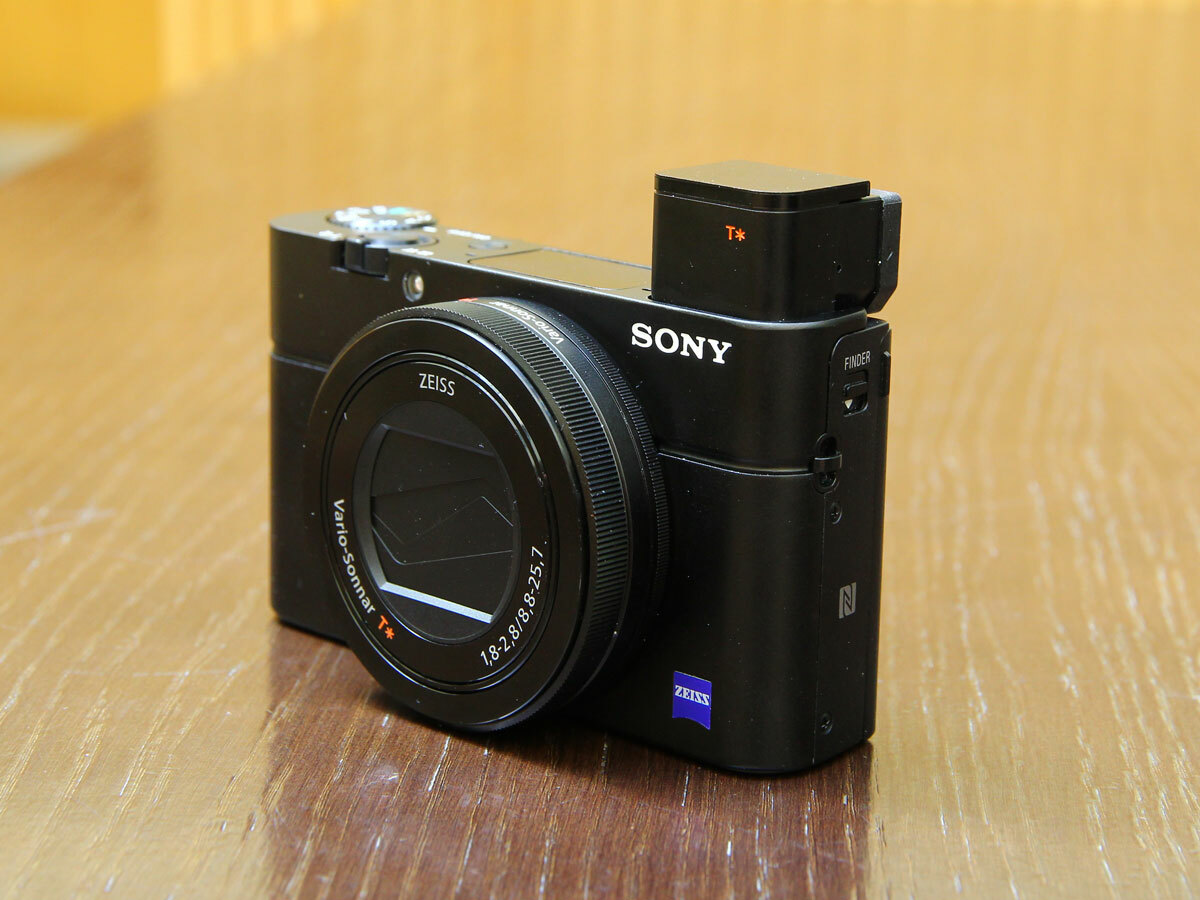
What have we forgotten to mention? Ah yes – there’s a built-in ND filter, which we didn’t try but which can provide up to 3 stops of light reduction – great for using slow shutter speeds in bright light, for instance if you want to take a picture of a bubbling brook on a sunny day.
You can output 4K stills to compatible TVs – a feature which all new cameras seem to have but which next to no-one will ever use. So let’s say no more about it. And there’s a new customisable button, which can be assigned with any of 41 functions. Meanwhile, the existing ‘fn’ button found on the previous 2 models is still in evidence, and can itself be changed to modify any one of 12 settings such as ISO, aperture or shutter speed. There’s a built-in flash, but the hotshoe from the Mk II has now been dropped.
And that’s all we can remember.
READ MORE: Lytro introduces Illum – a pro-level camera that can refocus after you shoot
Sony RX100 III – initial verdict
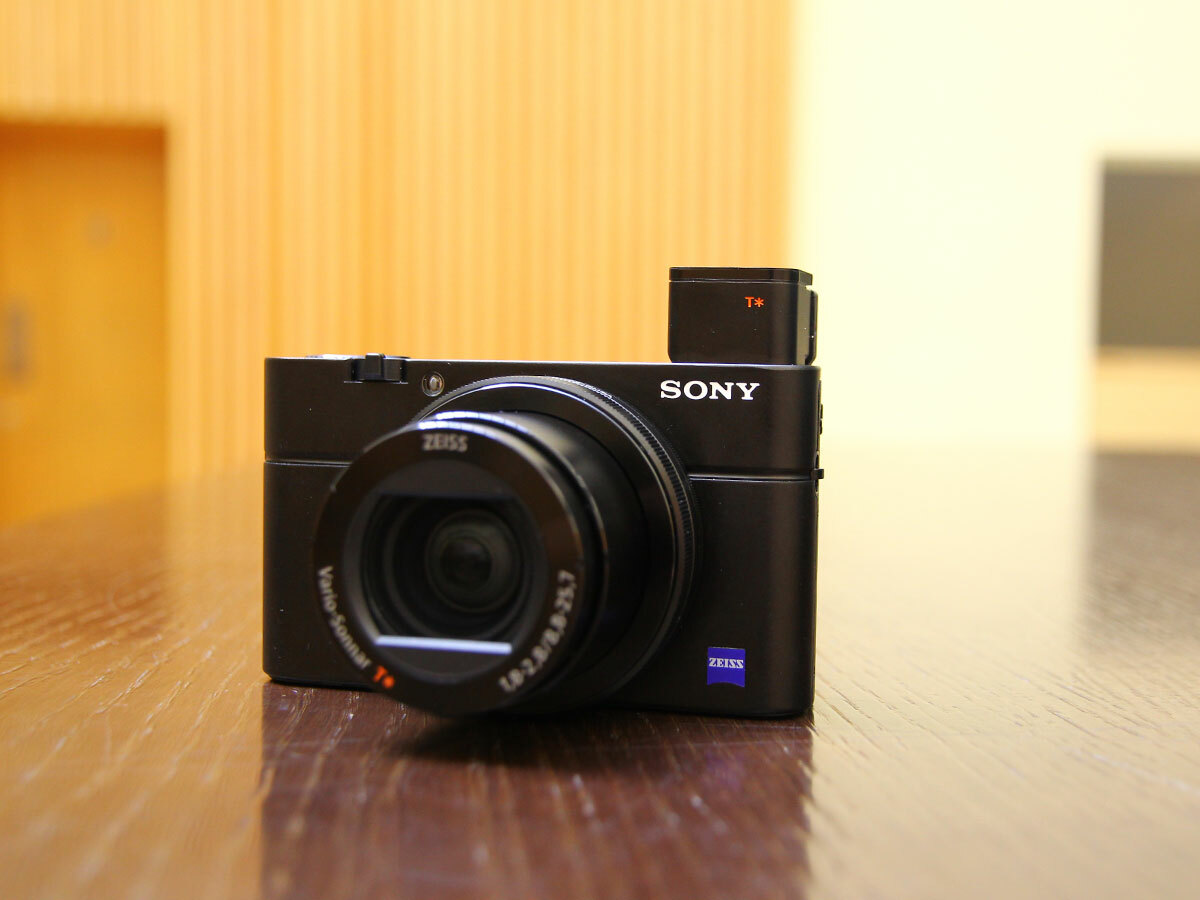
It’s hard to give a proper verdict here, as the RX100 III we used wasn’t a final version, and we weren’t able to take away and forensically examine any pictures from it. What we can say is that there’s absolutely no reason why it won’t rival the RX100 and RX100 II in the quality stakes, and in fact we’d expect it to surpass them based on its hopefully superior low-light skills and just general newness.
Add to that the fact that it now has a very cleverly designed electronic viewfinder, wider-angle lens, twistier screen, enhanced video skills, improved 5-axis stabilisation, dual video recording option and better subject-tracking skills, and you’re looking at a camera that could be one of the best compacts ever.
There’s no word yet on price or release date, but it’s unlikely to come cheap. On the plus side, the RX100 and RX100 II are both being continued, and should see price drops when the new model arrives.
We’ll be bringing a full review to you as soon as possible, so keep checking back for the final verdict.
READ MORE: The 10 best compact cameras in the world right now
